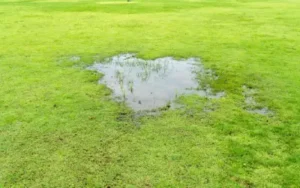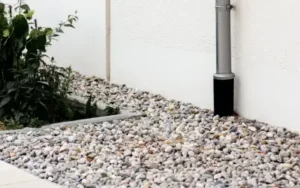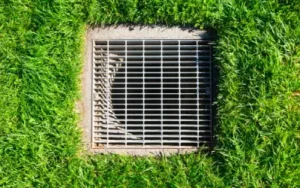What’s the Best Type of Drainage System for Your Florida Property?
 Folks often ask us which type of drainage system is best for a Florida property. While there are a few options that are great in many situations – like French drains and catch basins – the answer is context-dependent. Flooding and excess water on your property is a problem for many homeowners in Florida. The good news is that for almost all of them, there’s a custom drainage solution that can alleviate the problem.
Folks often ask us which type of drainage system is best for a Florida property. While there are a few options that are great in many situations – like French drains and catch basins – the answer is context-dependent. Flooding and excess water on your property is a problem for many homeowners in Florida. The good news is that for almost all of them, there’s a custom drainage solution that can alleviate the problem.
Which drainage system is best for your Florida property? That’s the most important question. Here are the four drainage system types we’ll be discussing, and a rough idea of when you might want one of these systems:
- French Drain: Use when you need to capture and remove groundwater from a large, saturated area.
- Catch Basin: Use when you have a specific low spot in your yard where water consistently pools.
- Channel Drain: Use when you need to quickly drain a long, flat surface like a driveway or patio.
- Swale or Bioswale: Use when you want to gently redirect surface water across your property in a natural-looking way.
We'll Hop On It!! Just leave your information below.Consult with a lawn and landscape design expert.
Understanding Drainage Options in Florida
Asking which sort of draining system is best for your property is like asking what sort of shoes you should wear in Florida in the winter. There are many great choices, like tennis shoes or dress shoes, or even sandals on a balmy day…
But we need more information to give you the best possible answer. And, by the way, we’re happy to answer your questions and discuss your options with you over the phone. We can do a free consultation with you on your property – just give us a call to schedule an appointment.
Think of these drainage systems as different tools that can be used to solve a specific type of problem. This is how these tools work, and when you might use them.
French Drains – What Are They?
 A French drain is an underground trench filled with gravel and a perforated pipe. French drain installation solves widespread water problems by collecting excess groundwater and directing it away from a soggy lawn or foundation.
A French drain is an underground trench filled with gravel and a perforated pipe. French drain installation solves widespread water problems by collecting excess groundwater and directing it away from a soggy lawn or foundation.
Why are French drains the best option for many home drainage needs?
When it comes to serious drainage, the French drain is in a league of its own. Its real power comes from its versatility. While other systems handle surface puddles, a French drain tackles the bigger problem of widespread, soggy ground caused by water moving underground.
Think of it like an underground highway for water, intercepting it before it can turn your lawn into a swamp or seep into your basement. It’s the go-to solution for those tough, persistent water issues.
When should I get a French drain?
- Choose this if your whole lawn feels soggy and swampy, not just one low spot.
- It’s for problems with groundwater coming up from below.
- It’s the best option to protect a damp basement or crawl space.
Catch Basins – What Are They?
 A catch basin is a square or round box with a grate on top that is installed in a low spot of a yard or patio. It acts as a collection point to fix isolated puddles by funneling water into a drainage pipe.
A catch basin is a square or round box with a grate on top that is installed in a low spot of a yard or patio. It acts as a collection point to fix isolated puddles by funneling water into a drainage pipe.
Is a catch basin for fixing one small puddle or for a large soggy area?
A catch basin is a great tool for fixing one puddle. It’s like a spot treatment. Think of it as a bathtub drain for your yard — you place it right at the bottom of a specific low point to drain that single problem area.
If your whole yard is soggy, you’d need a broader solution like a French drain.
Should I put a catch basin under my gutter downspout?
Yes, this is a common application for catch basins. Installing a catch basin under a downspout not only captures all that roof water but also acts as a filter. It traps leaves, twigs, and shingle grit in its basin before they can get into your underground pipes and cause a clog down the line. It’s a simple move that makes your whole drainage system more reliable.
When should I get a catch basin?
- Choose this if you have one specific low spot in your yard that always turns into a puddle.
- It’s a drain for a single problem area.
- It’s also great for putting directly under a gutter downspout to catch roof water.
We'll Hop On It!! Just leave your information below.Consult with a lawn and landscape design expert.
Channel Drains – What Are They?
A channel drain is a long, narrow grated drain that is set flush into a paved surface like a driveway. It is used to intercept and remove a wide sheet of water before it can flood a garage or patio.
Is a channel drain the right choice for a puddle in the middle of my lawn?
No, definitely not. A channel drain is the wrong tool for that job. It’s designed to be set into a hard, solid surface and would immediately get clogged with grass, mud, and debris in a lawn. For a puddle in the grass, a catch basin is what you’re looking for.
Is a channel drain just for driveways and concrete?
Pretty much, yes, that’s their specialty. Channel drains are made for concrete areas and hardscaping — think driveways, patios, pool decks, and walkways. They are designed to be installed flush with the surface to catch water that’s sheeting across a wide area that it can’t soak into.
When should I get a channel drain?
- Choose this if your driveway, patio, or other paved area floods.
- It works like a long gutter built right into the pavement to catch water flowing across the surface.
- Perfect for stopping water from running into your garage.
Swales and Bioswales – What Are They?
A swale is a shallow, wide, and gently sloped depression in your lawn. It functions as a natural, grassy channel to slow down and guide surface water runoff across your property.
Why would I build a swale instead of just burying a pipe to carry water away?
Choosing a swale over a pipe is all about going for a more gentle approach.
The simple reason why many people choose swales is that they look good. A swale is just a subtle, grassy dip in your yard that blends right in. A pipe often requires unattractive grates and covers. So if you’d like a subtle, natural appearance, a swale is a great choice.
Swales are also an eco-friendly choice. Instead of shooting water straight into a storm drain, a swale slows the flow down, allowing it to soak back into our local ground.
Do I need a sloped yard for a swale to work?
While many swales are built on sloping yards, not necessarily. Natural slope makes things easier, but the whole point of building a swale is to create a gentle, guided path for water to follow.
As long as you have a slightly lower area on your property to aim it toward, you can design a swale with enough of a slope to get the water moving slowly but surely in the right direction.
When do I need a swale?
- Choose this if you want the most natural-looking way to guide water across your yard.
- It’s just a wide, shallow, grassy ditch that works like a slow-moving creek.
- It’s the best choice if you have a bit of space and don’t want to use pipes or plastic grates.
Call Us About Drainage Systems in Florida!
Don’t let another Florida downpour turn your property into a swamp. As you’ve seen, powerful solutions like French drains and catch basins can solve everything from a widespread soggy lawn to that one stubborn puddle that never seems to dry.
Stop guessing what you need and get a definitive answer. Contact us now to schedule your free, on-site consultation and take the first step toward a dry, beautiful property you can finally enjoy year-round.
Back to Landscape Drainage